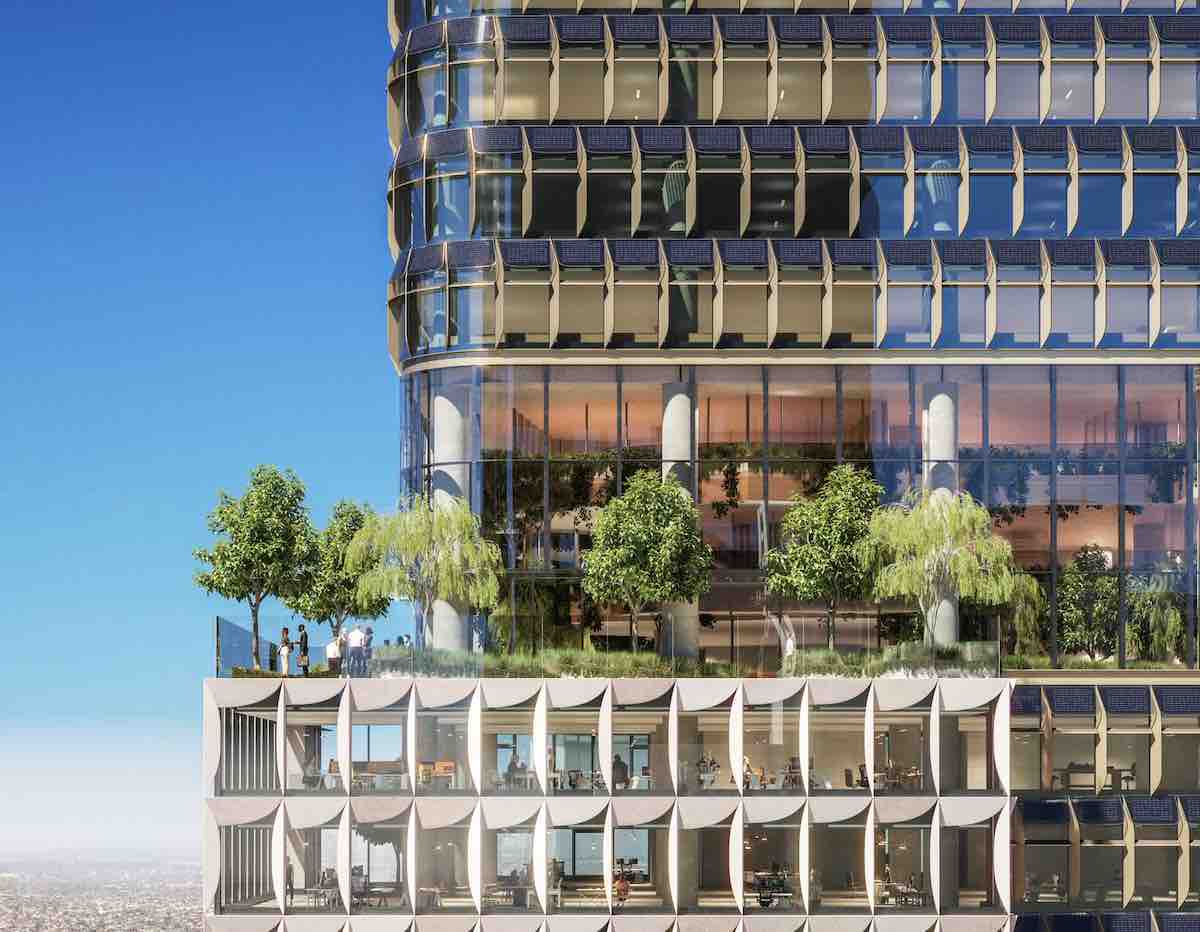
A post-pandemic reboot of plans to build a 48-level office tower in Melbourne’s CBD will feature a “solar skin” made up of vertical glass PV panels, that will generate 20% of the building’s power once completed.
The project’s developer, Cbus Property, said previous plans for the building, 435 Bourke, had been approved for construction by the Victorian Department of Environment, Land, Water and Planning back in January 2020, just as Covid-19 was starting to make itself felt in Australia.
Nearly two years later, Cbus CEO Adrian Pozzo said the company was inspired by the changes wrought by the pandemic to “future-proof” the building’s design, to bring workers back to the city with a focus on sustainability, connection, nature and productivity.
In that spirit, and with project architects Bates Smart on the same page, a new development application was submitted for the $1 billion “diverse ecosystem of workspaces,” complete with what the developers believe to be a first-of-its-kind solar skin – a least in Australia.
“The solar skin system is made up of translucent, vertical glass photovoltaic panels that will help generate 20 per cent of the base building power,” said Bates Smart director, Cian Davis, in comments this week.
“People working in the building will be able to look out the window and see where their energy comes from.
“This collected energy coupled with all-electric operations will help the tower save 430 tonnes of carbon dioxide emissions per year. The building will also reduce its embodied carbon by 30 per cent through the use of finely tuned materials.”
At this stage of the game, Bates Smart is not able to say how much the integrated solar component of the project will cost, or where the technology will come from – a spokesperson told One Step Off The Grid that this was yet to be confirmed, with a procurement process in the planning.
But the solar glass part panels are expected to comprise roughly 20 per cent of the building’s entire facade, as well as generating roughly one-fifth of its energy needs.
Beyond the solar element, the building will be all-electric and, in line with Cbus Property’s commitment to net-zero carbon by early 2022, designed to achieve net zero emissions once in operation, with the balance of the building to be powered by off-site renewable electricity.
“We didn’t want to design a building that would be outdated by its completion. Instead, it will cater to any work setting and scenario, engage with its surroundings, be open to the neighbourhood at the ground, and achieve the best tall commercial tower performance in Australia,” said Davis.
“When it welcomes its first tenants, it will be Melbourne’s most flexible, sustainable and, frankly, human commercial building. It is architecture designed for the future, which is already here.”
Cbus Property’s Pozzo, said his business was pleased to be able to formally submit the modified development plans, which encompass four addresses on the corner of Bourke and Queen streets to serve as a “vertical village” for more than 5,500 city workers.
“Our vision is to create another world-class commercial building that represents Cbus Property’s leadership in resilient and sustainable development, while enabling a diversity of experiences and working environments that respond and adapt to evolving workplace trends,” Pozzo said.
“With the onset of the pandemic, we were not content to rest on the laurels of our first DA and strove to future-proof the design of 435 Bourke,” he added.
“Future work practices are expected to trigger a flight to new developments that are able to respond to shifting tenant needs calling for a holistic and collaborative work-life approach.
“435 Bourke will meet this demand as a truly state-of-the-art, world’s-best-practice office tower; a pioneer project for the city that will revitalise the centre of the Hoddle Grid precinct and take in 360-degree views.”

Sophie is editor of One Step Off The Grid and deputy editor of its sister site, Renew Economy. Sophie has been writing about clean energy for more than a decade.



